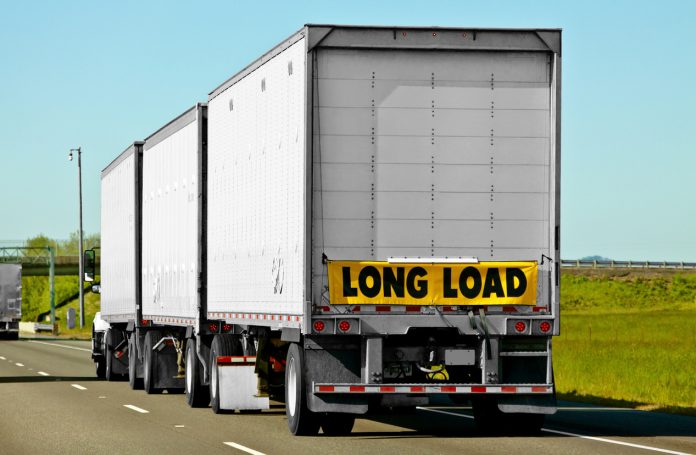Scaling LCV’s (long combination vehicles) can be a very tricky endeavour. As we know, in 2 or 3 trailer combinations, the heaviest trailer (called the “lead”) must be hooked to the truck, and the lighter trailer (called the “pup”) must be on the back. Before you even start to hook everything together, grab your converter with the truck, and run them over the scale to get the empty weight of your drive axles, and the empty weight of the converter. You will need these numbers. For the sake of this article, we’ll use 8,000 lbs for the weight of the drives, and 4.400 lbs for the weight of the converter.
After scaling the drives and converter, drop the converter out of the way and hook to your rear trailer, and run it over the scale to get your axle weights and gross weight. To determine the weights, take the weight on your drives, subtract 8,000 and add 4,400. For example, if the scale shows 34,000 lbs on the drives, subtract 8,000 (the weight of the drives when empty) and add 4,400 lbs (the empty weight of the converter, and you will have the weight on the converter when everything is all connected. Drop the rear trailer, and spot the converter in front of it, but do not back it all the way under, or you will have a very hard time hooking everything up.
Now you can hook to your lead trailer and scale it out. If your gross weight with the lead is less than the gross weight with the rear trailer, then hopefully you can switch them around and use the pup as the lead and the lead as the pup. If not, then you need to contact your dispatcher.
If your axle weights are good, then you have to determine if your bridge weight and gross weights are good. Bridge weight is the weight of the lead trailer axles and the converter. Thankfully, they changed the allowable weight a few years back, so you can run as high as 69,400 lbs (34,000 kgs) on the bridge. To determine your gross weight, add your steering axle weight when you scaled the lead trailer, the weight in the drives with the lead trailer, the weight of the bridge, and the weight of the pup trailer’s axles. If the total is under the 140,000 lbs (63,500 kgs) limit, then you can hook everything up and be on your way. However, if any of these weights exceed the maximum allowed, then you should not pull them. Some scale operators have been known to have a driver break a set of combinations apart and scale them individually to verify the heavier trailer is in the front.



















